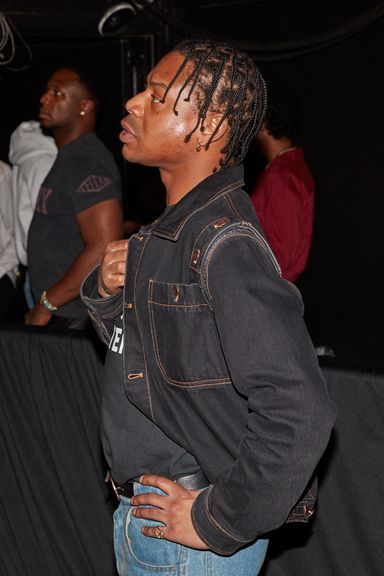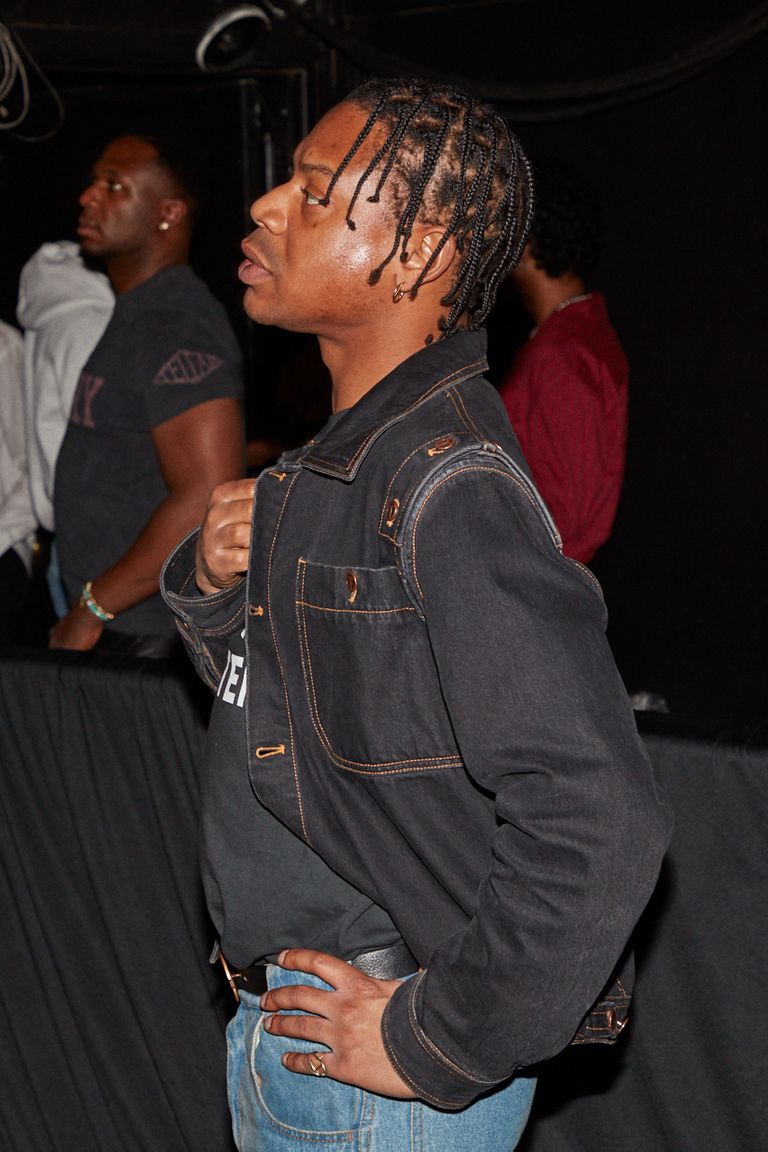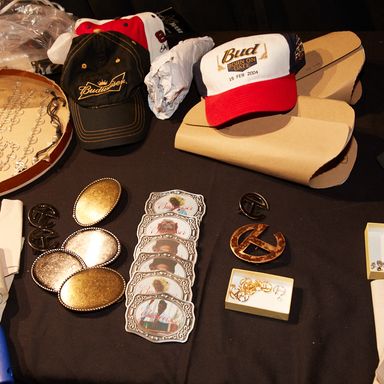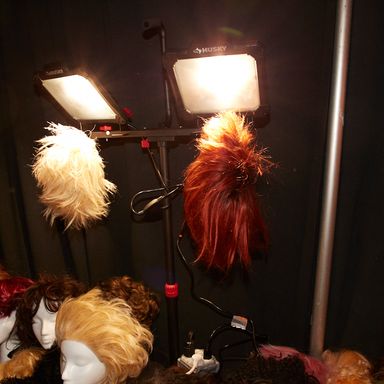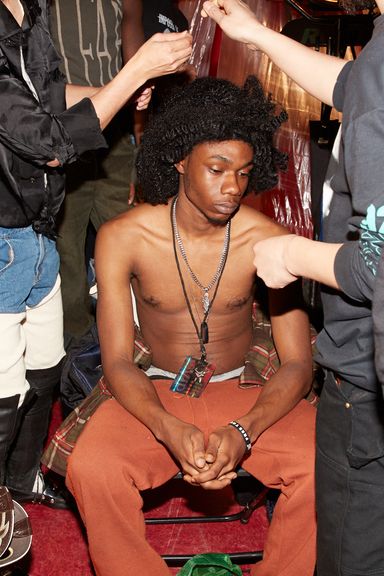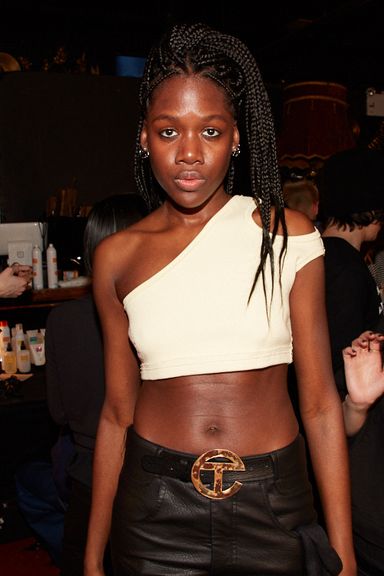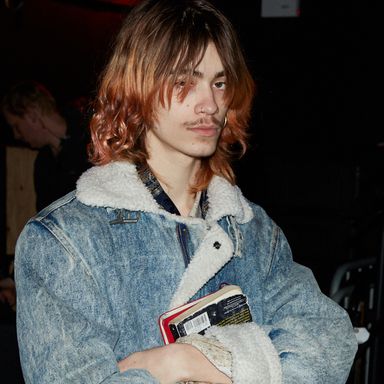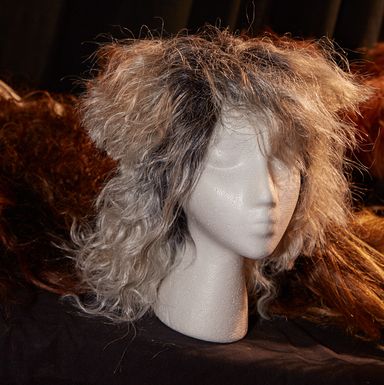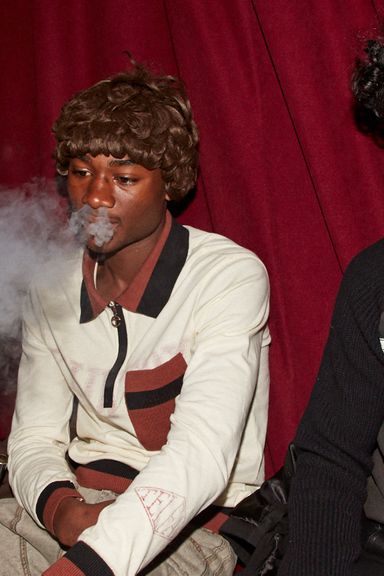All the Downtown Kids Wanted to Be at Telfar Last Night
A Telfar fashion presentation always begins on the street. Everyone fashions themselves VIP. And it’s pure mayhem.
Such was the scene outside of rock-music venue Irving Plaza last night, where a crowd of many hundreds waited for the doors to open on Telfar’s fall 2019 show. Downtown always dresses for Telfar Clemens, the Liberian-American designer behind the label, who won the prestigious CFDA/Vogue Fashion Fund Award in 2017. A few of the assembled were friends of his from what he calls “clubland,” the Brooklyn and downtown dance scene where he regularly DJs.
To show they were with him long before the establishment’s embrace, some wore the designer’s “CUSTOMER” hoodies and T-shirts, which first appeared for fall 2014. Others carried the brand’s double-strap vegan leather “shopping bag,” which is advertised as an “EVERY-DAY bag for EVERY-ONE” and has become iconic among his cult. Both men and women peacocked in the bag — a reminder that Clemens has been casting aside labels since 2005, when he launched the line alongside his creative partner, Babak Radboy. Genderless design has since become trendy, but Clemens was early to the power of (as he put it in his presentation statement) “pure garments without the ornament of gender, race, class.”
Once inside, the crowd was treated to a live music and fashion performance. It’s a format that has become de rigueur for Telfar. This season the presentation, entitled “Country,” was about the state of our union. “The idea’s actually been evolving over the life of the brand,” explains Radboy. “In the past it’s been about taking the language of appropriation and redirecting it, appropriating images of colonization, of manifest destiny, the narrative of natural rights. [All of these ideas are] really dear to our understanding of who we are in American fashion.”
As American politics has gotten more volatile, the brand has gotten more attracted to the question of who constitutes America and who gets to make its fashion. Framing the stage was a large outline of a tattered 30 x 40 foot American flag. Its world-weary aesthetic perfectly matched the mood of the collection, which was created from an “earthy palette of drab, brown, tan, and navy,” packaged into a modern take on traditional cowboy aesthetics.
“A lot of the shapes are classic American,” explains Clemens, “like a bell-bottom pant or a polo shirt.” He says he’s interested in transforming these shapes to make them more inclusive of queer bodies. Take a standard white shirt: “We aren’t interested in what it was, you know? It’s like, nah, that’s a halter, that’s our half tank, and now those thermal pants are attached to jeans.”
Still, Clemens and Raboy don’t want anyone to confuse their argument with fashion’s bland, toothless vision of inclusivity. “We don’t want to be the posterboy for that thing,” says Radboy. “It’s not just gonna be this gospel performance and this narrative of black excellence.”
Models wore leather jackets and blazers slit at the side to look like capes. Some of them walked the short distance from back of stage to front and leapt into the audience, where they were carried around the space — a move choreographed by the dancer Xavier Cha to represent the way Telfar has been literally supported by many in the crowd.
The show was made in collaboration with Telfar’s creative friends, including the musicians Total Freedom, Butch Dawson, and singer Oyinda, who remixed Janet Jackson’s “Anytime, Any Place” and Curtis Mayfield’s “Jesus” into country music. For her performance, Oyinda wore one of the simplest looks of the collection: an outsized black cowboy hat, a cropped white asymmetrical tank top, and high-waisted bell bottoms, with a skinny belt fastened by a large buckle bearing the label’s logo.
As she sang to the audience, it became clear that Telfar has succeeded in creating an entire aesthetic world, where, as the fashion writer Fraser Kennedy once observed about another downtown style star, Stephen Burrows, “Clothes alone will never make you fashionable. Friends, thoughts, face, and life must match.”
The evening’s chaotic mood, high on punk and independence, was best summed up by the show’s opener, the playwright Jeremy O. Harris, who has become a downtown sensation in his own right with his recent staging of “Slave Play” at the New York Theater Workshop. Wearing a cobalt blue Telfar corduroy suit, he delivered a monologue for our dystopian times:
Countrymxn.
I’ve been frettin’ over how I should welcome y’all? For who am
I
To welcome you to a place
you’ve
always been?
To welcome you
to a place
you’ll never cease to be.
How do I welcome y’all?
Don’t
I, We. Us.
Like soldiers
A family
Have placed our feet
In the hands of our fellow Countrymxn
Have bore their weight
And felt them bear ours
In our
Constructing of a land,
We’s sculpted in my image
Our image.
Telfar.
Country.
This is a manifesto
On the state of
Our union
A
Union
Of me
You
And us…
